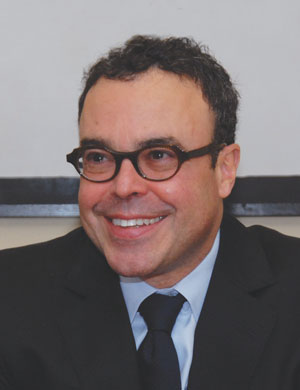Tissue removed from your body for diagnostic reasons may be a piece of your own flesh, but once it’s out, the hospital that excised it can have ownership of it, according to a Superior Court ruling that marks the first time a Canadian court has addressed the issue.
 In Piljak Estate v. Abraham, Master Ronald Dash adopted the position of a Canadian Medical Association Journal article that suggested both the possession and ownership of the tissue transfer to the hospital after removal. He made the findings in a medical negligence case in which the defendants moved for genetic testing of liver tissue taken from Snezana Piljak under Rule 32.01.
In Piljak Estate v. Abraham, Master Ronald Dash adopted the position of a Canadian Medical Association Journal article that suggested both the possession and ownership of the tissue transfer to the hospital after removal. He made the findings in a medical negligence case in which the defendants moved for genetic testing of liver tissue taken from Snezana Piljak under Rule 32.01.
“The authors state that it ‘is unquestionably true that patients own their tissue before it is excised,’ and while it has never been squarely dealt with by a Canadian court, they conclude that diagnostic tissue, once excised becomes a ‘component of the medical record,’” he said in summarizing the journal article.
“As such, ‘both possession and ownership are transferred to the institution’ and ‘by virtue of it being part of the medical record, diagnostic tissue is therefore owned by the institution or hospital,’” he added.
“At best a patient is entitled to ‘reasonable access.’ The authors note that their conclusion has been supported by American jurisprudence. While this is not binding on me I find the reasoning compellable and I adopt its conclusions.”
He continued: “Ms. Piljak’s excised tissue is therefore owned by Sunnybrook Hospital, whose pathology department performed the diagnostic tests and in whose archives the tissue is kept. As the excised tissue is subject to rights of ownership, and since the tissue is clearly a moveable, I conclude that it is personal property to which inspection and testing under rule 32.01 may apply.”
Lawyers say the decision could have significant implications, including for people such as cancer patients who would like to have a piece of their tissue transferred from a hospital for a clinical trial that offers their last hope for a cure.
Dash’s ruling is the first Canadian court decision to squarely address the ownership of excised diagnostic tissue, says Bella Martin, co-author of the journal article accepted by the court.
Martin, who’s also general house counsel for the University Health Network, says the decision is significant as the issue comes up frequently at the UHN and other hospitals.
“I can tell you that the issue of whose tissue is it is a recurring issue at our hospital and, I have to assume, in many hospitals,” she says.
“There are competing interests in that tissue. You’ve got the patient who feels it is theirs, it comes from their body so they should be able to direct what happens to it, and there are researchers . . . who feel, with the patients’ consent or on their own, that they should be able to access that tissue. And then, of course, there’s the institution housing the tissue that feels it should be theirs.”
At the UHN, hospitals use excised tissue for teaching, research, and legal purposes. They also use tissue to conduct genetic testing on patients’ children years later when new medical knowledge may shed added light on a disease.
As it has in the past, the hospital will continue to give patients access to their tissue when they’re seeking alternative treatments or medical opinions as long as it will have a sufficient amount left for its record, says Martin.
“This is not about hoarding the material and denying access to the patient,” she adds.
“It’s just that when it gets down to this small amount . . . if what’s required is to deplete all of that . . . we’re a little more protective of that.”
While an appeal court may well overturn Dash’s decision, “for the time being, this is the law,” says Martin.
But health lawyer Alan Belaiche says the conclusion that the hospital has ownership of the issue is “overly simplistic.” He believes the law should restrict hospitals’ ownership of excised diagnostic tissue to a certain number of purposes.
“The suggestion that a patient relinquishes his or her right in that tissue is just not consistent with more compelling reasons for why not,” he says.
“There’s a line of cases in the U.S., for example, about genetic markers and the suggestion that a patient would relinquish all of their rights such that a hospital would be able to commercially exploit the tissue for some hidden genetic markers or something is just not good law,” he adds.
“It’s just not a good practice. Similarly, for the tissue to be used for other purposes isn’t consistent with the meaning of diagnostic tissue.”
Reasonable access to inspect the excised tissue should be “part of the spectrum of rights” of the patient, according to Belaiche.
The ownership issue arose in a medical negligence case in which the defendant doctors sought access to a tumour one of them had removed from Piljak’s body during a colonoscopy. Getting access to the tissue and conducting a genetic test on it could bolster their defence, they suggested.
After Piljak died from colorectal cancer, her estate sued the doctor who performed the colonoscopy, as well as his colleagues, for medical negligence. The doctors say genetic testing on the excised tissue could corroborate or refute evidence that Piljak had died from a kind of hereditary colorectal cancer that develops rapidly and that doctors can easily miss despite proper colonoscopies.
Despite his findings about the ownership and personal property issues, Dash rejected the defendants’ request for
access to the tissue for several reasons, including a lack of detailed evidence about the proposed tests on the tumour.
In rejecting the defendants’ request, Dash cited the failure to iron out the details of the methodology used to conduct the genetic testing, provide evidence there would be sufficient tissue left for the record after the tests, and show where they would take place.
“Second, in my view the rule presupposes that the person inspecting the property and conducting tests thereon is either a party or an expert retained by a party, or at least a person willing and able to perform the tests at the request of a party,” he wrote. The moving party hadn’t retained the doctor who would conduct the tests, he added. In addition, there was no evidence as to whether the doctor would actually do the tests, he noted.
Nevertheless, Dash suggested the defendants “could improve their position” if they brought a fresh motion providing more evidence and detail about the testing.
 In Piljak Estate v. Abraham, Master Ronald Dash adopted the position of a Canadian Medical Association Journal article that suggested both the possession and ownership of the tissue transfer to the hospital after removal. He made the findings in a medical negligence case in which the defendants moved for genetic testing of liver tissue taken from Snezana Piljak under Rule 32.01.
In Piljak Estate v. Abraham, Master Ronald Dash adopted the position of a Canadian Medical Association Journal article that suggested both the possession and ownership of the tissue transfer to the hospital after removal. He made the findings in a medical negligence case in which the defendants moved for genetic testing of liver tissue taken from Snezana Piljak under Rule 32.01.“The authors state that it ‘is unquestionably true that patients own their tissue before it is excised,’ and while it has never been squarely dealt with by a Canadian court, they conclude that diagnostic tissue, once excised becomes a ‘component of the medical record,’” he said in summarizing the journal article.
“As such, ‘both possession and ownership are transferred to the institution’ and ‘by virtue of it being part of the medical record, diagnostic tissue is therefore owned by the institution or hospital,’” he added.
“At best a patient is entitled to ‘reasonable access.’ The authors note that their conclusion has been supported by American jurisprudence. While this is not binding on me I find the reasoning compellable and I adopt its conclusions.”
He continued: “Ms. Piljak’s excised tissue is therefore owned by Sunnybrook Hospital, whose pathology department performed the diagnostic tests and in whose archives the tissue is kept. As the excised tissue is subject to rights of ownership, and since the tissue is clearly a moveable, I conclude that it is personal property to which inspection and testing under rule 32.01 may apply.”
Lawyers say the decision could have significant implications, including for people such as cancer patients who would like to have a piece of their tissue transferred from a hospital for a clinical trial that offers their last hope for a cure.
Dash’s ruling is the first Canadian court decision to squarely address the ownership of excised diagnostic tissue, says Bella Martin, co-author of the journal article accepted by the court.
Martin, who’s also general house counsel for the University Health Network, says the decision is significant as the issue comes up frequently at the UHN and other hospitals.
“I can tell you that the issue of whose tissue is it is a recurring issue at our hospital and, I have to assume, in many hospitals,” she says.
“There are competing interests in that tissue. You’ve got the patient who feels it is theirs, it comes from their body so they should be able to direct what happens to it, and there are researchers . . . who feel, with the patients’ consent or on their own, that they should be able to access that tissue. And then, of course, there’s the institution housing the tissue that feels it should be theirs.”
At the UHN, hospitals use excised tissue for teaching, research, and legal purposes. They also use tissue to conduct genetic testing on patients’ children years later when new medical knowledge may shed added light on a disease.
As it has in the past, the hospital will continue to give patients access to their tissue when they’re seeking alternative treatments or medical opinions as long as it will have a sufficient amount left for its record, says Martin.
“This is not about hoarding the material and denying access to the patient,” she adds.
“It’s just that when it gets down to this small amount . . . if what’s required is to deplete all of that . . . we’re a little more protective of that.”
While an appeal court may well overturn Dash’s decision, “for the time being, this is the law,” says Martin.
But health lawyer Alan Belaiche says the conclusion that the hospital has ownership of the issue is “overly simplistic.” He believes the law should restrict hospitals’ ownership of excised diagnostic tissue to a certain number of purposes.
“The suggestion that a patient relinquishes his or her right in that tissue is just not consistent with more compelling reasons for why not,” he says.
“There’s a line of cases in the U.S., for example, about genetic markers and the suggestion that a patient would relinquish all of their rights such that a hospital would be able to commercially exploit the tissue for some hidden genetic markers or something is just not good law,” he adds.
“It’s just not a good practice. Similarly, for the tissue to be used for other purposes isn’t consistent with the meaning of diagnostic tissue.”
Reasonable access to inspect the excised tissue should be “part of the spectrum of rights” of the patient, according to Belaiche.
The ownership issue arose in a medical negligence case in which the defendant doctors sought access to a tumour one of them had removed from Piljak’s body during a colonoscopy. Getting access to the tissue and conducting a genetic test on it could bolster their defence, they suggested.
After Piljak died from colorectal cancer, her estate sued the doctor who performed the colonoscopy, as well as his colleagues, for medical negligence. The doctors say genetic testing on the excised tissue could corroborate or refute evidence that Piljak had died from a kind of hereditary colorectal cancer that develops rapidly and that doctors can easily miss despite proper colonoscopies.
Despite his findings about the ownership and personal property issues, Dash rejected the defendants’ request for
access to the tissue for several reasons, including a lack of detailed evidence about the proposed tests on the tumour.
In rejecting the defendants’ request, Dash cited the failure to iron out the details of the methodology used to conduct the genetic testing, provide evidence there would be sufficient tissue left for the record after the tests, and show where they would take place.
“Second, in my view the rule presupposes that the person inspecting the property and conducting tests thereon is either a party or an expert retained by a party, or at least a person willing and able to perform the tests at the request of a party,” he wrote. The moving party hadn’t retained the doctor who would conduct the tests, he added. In addition, there was no evidence as to whether the doctor would actually do the tests, he noted.
Nevertheless, Dash suggested the defendants “could improve their position” if they brought a fresh motion providing more evidence and detail about the testing.







